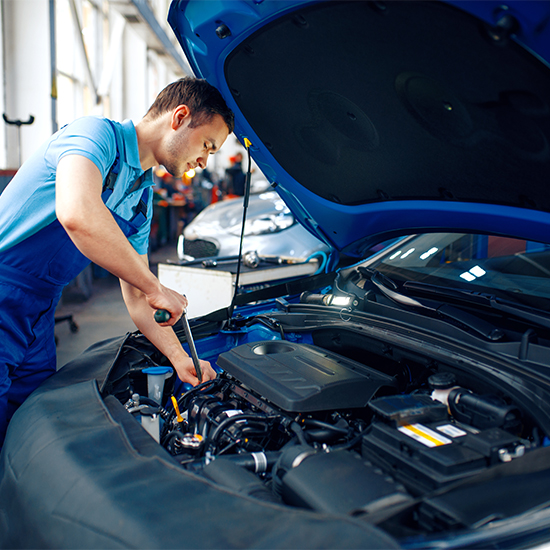All Categories
Featured

[/image]
2 of the most crucial tire solutions are tire turning and alignment. If you're strange with what tire turning and positioning entail, below's a comprehensive appearance at why they matter and exactly how they profit your automobile.
What Is Tire Rotation? Tire turning refers to relocating your tires from one position to one more to ensure they put on evenly. The factor tire turning is necessary is because not all tires put on the same way. In front-wheel-drive lorries, for example, the front tires deal with both guiding and power, which makes them wear faster than the back tires. The back tires wear in a different way in rear-wheel-drive and all-wheel-drive vehicles.
By revolving your tires consistently, you can cancel the wear throughout all 4 tires. This helps them last much longer and permits more even traction, enhancing handling and stability. Most makers suggest revolving your tires every 6,000 to 8,000 miles or according to the vehicle's guidebook.
What Is Tire Alignment? Tire positioning, also known as wheel placement, describes the procedure of adjusting the angles of your cars and truck's wheels to meet the producer's specs. The objective of alignment is to guarantee that all 4 tires are aiming in the best direction and at the right angles, which permits ideal handling, safety and security, and tire life.
There are 3 major alignment angles that are adjusted during a placement check:

Camber: The tilt of the wheels when seen from the front. If the camber is off, it can cause irregular tire wear, as the tire will certainly not make full call with the roadway surface area. Wheel: The angle of the guiding axis when watched from the side. Correct caster placement makes sure that your car is secure when driving straight which your wheel go back to its typical placement after a turn. Toe: The angle at which the tires point internal or exterior when checked out from above. Wrong toe positioning can create the tires to drag, bring about irregular wear and lowered fuel effectiveness. Imbalance can occur over time due to typical driving or from striking challenges like aesthetics or fractures. If your alignment is off, it's important to get it inspected and fixed to avoid concerns down the road.
Why Tire Rotation and Alignment Issue. Boosted Tire Life:. Routine tire turning makes certain also tire wear, assisting you get the most gas mileage out of your tires. Uneven wear can cause you to replace tires too soon, which can be costly. When your tires use equally, they last much longer, saving you cash in the long term.
Enhanced Car Handling:. Appropriate positioning maintains your automobile driving straight and steady, specifically at higher rates. Misalignment can create your automobile to draw away, making it more challenging to guide. By keeping your tires lined up, you ensure your vehicle manages more efficiently and naturally.
Improved Safety:. Tires that are not rotated or lined up properly can wear erratically, impacting exactly how well your lorry stops and corners. Misaligned tires or tires with irregular wear patterns might trigger reduced traction, especially in damp or icy problems, leading to a greater risk of mishaps.
Better Fuel Efficiency:. Tires that are misaligned can produce moving resistance, implying your engine has to function more difficult to relocate the vehicle. This increases fuel consumption and reduces your automobile's gas performance. Correct tire alignment reduces rolling resistance, which can enhance gas mileage.
Indicators Your Tires Required Rotation or Positioning. While it's necessary to remain on top of routine tire turnings and positionings, there are a couple of indicators that might indicate your tires require focus:
Irregular Use: If you see that tire is extra used than the others, it's most likely time for a turning. Steering Pull: If your auto draws away or feels off-center, maybe a sign of imbalance. Resonances: If you really feel vibrations in the steering wheel or the automobile, maybe because of a positioning issue. Noisy Tires: Screeching or loud tires might indicate improper rotation or misalignment. If you notice any one of these signs, it is necessary to obtain your tires inspected by a specialist.
Just How Typically Should You Turn and Straighten Your Tires? Tire turning must usually be done every 6,000 to 8,000 miles, though this can vary based upon your driving problems and the kind of vehicle you drive. It's also a good idea to have your tires turned whenever you obtain an oil change.
For placement, you need to have your tires straightened every 1-2 years, or much more regularly if you notice any kind of problems with managing or uneven tire wear. If you struck a large pothole or aesthetic, it's smart to obtain a placement examine right now.
Conclusion: Regular Upkeep for Optimum Performance. Tire turning and positioning are 2 simple but important services that maintain your automobile running efficiently, effectively, and securely. By revolving your tires routinely and maintaining your wheels effectively straightened, you can prolong the life of your tires, improve handling, and appreciate much better gas efficiency.
Latest Posts
Discover Special Auto Repair Deals in Chicago at Montclare Auto Repair
Uncover the Leading Auto Repair Discounts in Montclare, Chicago
Don’t Miss Limited-Time Auto Repair Specials in Chicago at Montclare Auto Repair
More
Latest Posts
Discover Special Auto Repair Deals in Chicago at Montclare Auto Repair
Uncover the Leading Auto Repair Discounts in Montclare, Chicago
Don’t Miss Limited-Time Auto Repair Specials in Chicago at Montclare Auto Repair